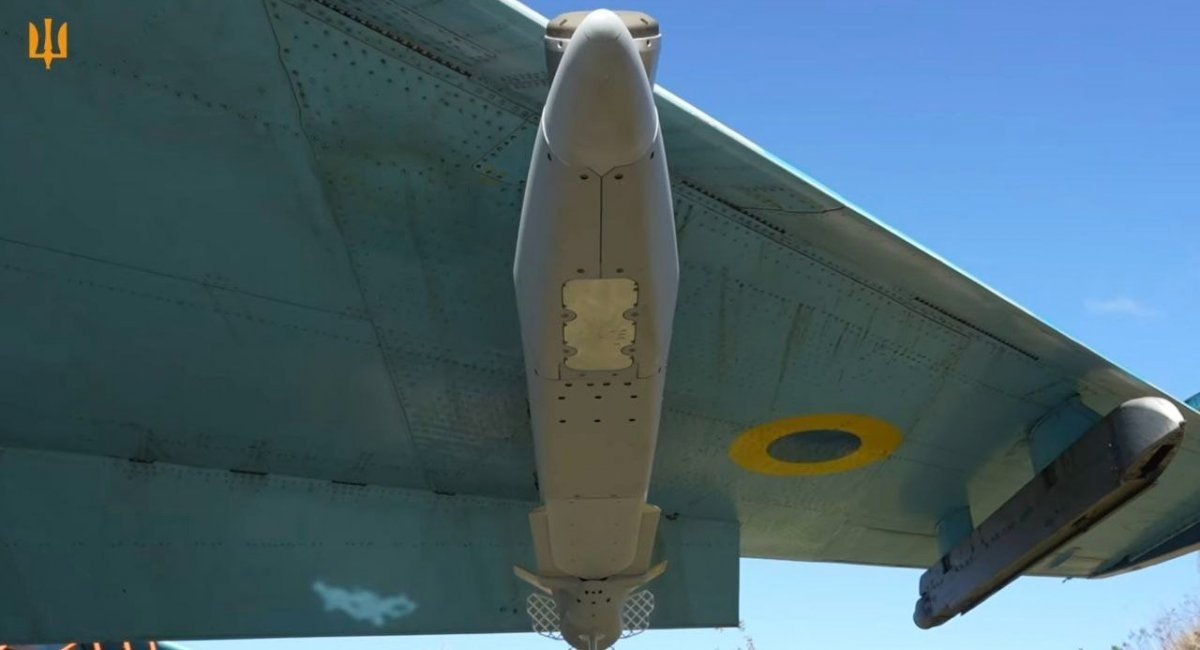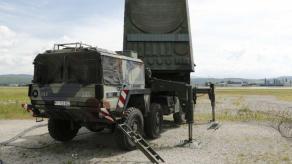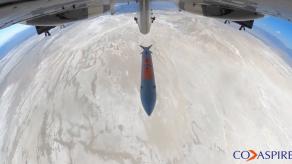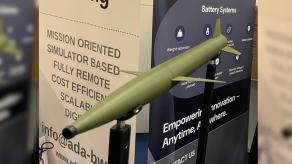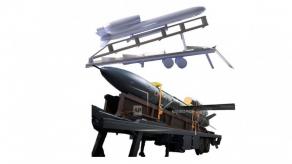Earlier, Defense Express noticed a video published by the Ukrainian Air Force Command, insightful about the missions and operations undertaken by the country's tactical aviation on a daily basis.
But there's more to it than meets the eye. The Su-27 fighter aircraft in the footage was equipped with ADM-160 MALD — in the first documented evidence of this jet-propelled drone used in pair with the Soviet-made Su-27.
Read more: Ukrainian Tactical Aviation Pilots Reveal Details of Complex Air Operation (Video)
For context, while using the MALD (Miniature Air-Launched Decoy) isn't new in the Ukrainian military, it was only previously seen with MiG-29 fighters, and it's technically compatible with F-16s as well.
The ADM-160 looks like a cruise missile, but on the inside is closer to a drone. Its function is to avert the attention of enemy air defense from real weapons, and for that purpose are the looks and equipment which allow the decoy to appear as either a real missile or even a B-52 bomber on radars.

The latest edition can also send the signal back to the operator, uncovering the positions of hostile air surveillance and defense systems.
Based on modification, it can travel 450 to 650 kilometers (280–560 mi). At a 45 kg weight, it is 2.38 meters long with a 0.65 m wingspan. There was no official announcement of its transfer to Ukraine; it transpired with the first Ukrainian attacks using Storm Shadow and SCALP-EG long-range missiles in 2023
Later, one MALD was noticed attached to a MiG-29 fighter of the Ukrainian Air Force, then confirmed by acting aviation commander Serhii Holubtsov. Like with any other Western loadout, Ukraine's Soviet-era jets had to undergo a modification in order to field them.
In the case of MALD specifically, most probably, this modification was limited to just the pylon launchers on the aircraft's hardpoints. The new video gives a better look at how it was done on the Su-27.

Apparently, holding the payload is the MAU-50 pylon with a 2,000-pound capacity, found in A-10 close air support aircraft, or the MAU-12 with a 5,000-pound capacity for F-15 and F-16 fighters. Usually, the launcher would be hidden inside the wing structure but Ukrainian engineers use an unknown external adapter for this.
On F-16, you can take up to four MALDs, while the A-10 takes up to ten, and the B-52 holds twelve, even. However, a MiG-29 was seen carrying only two despite six hardpoints available.
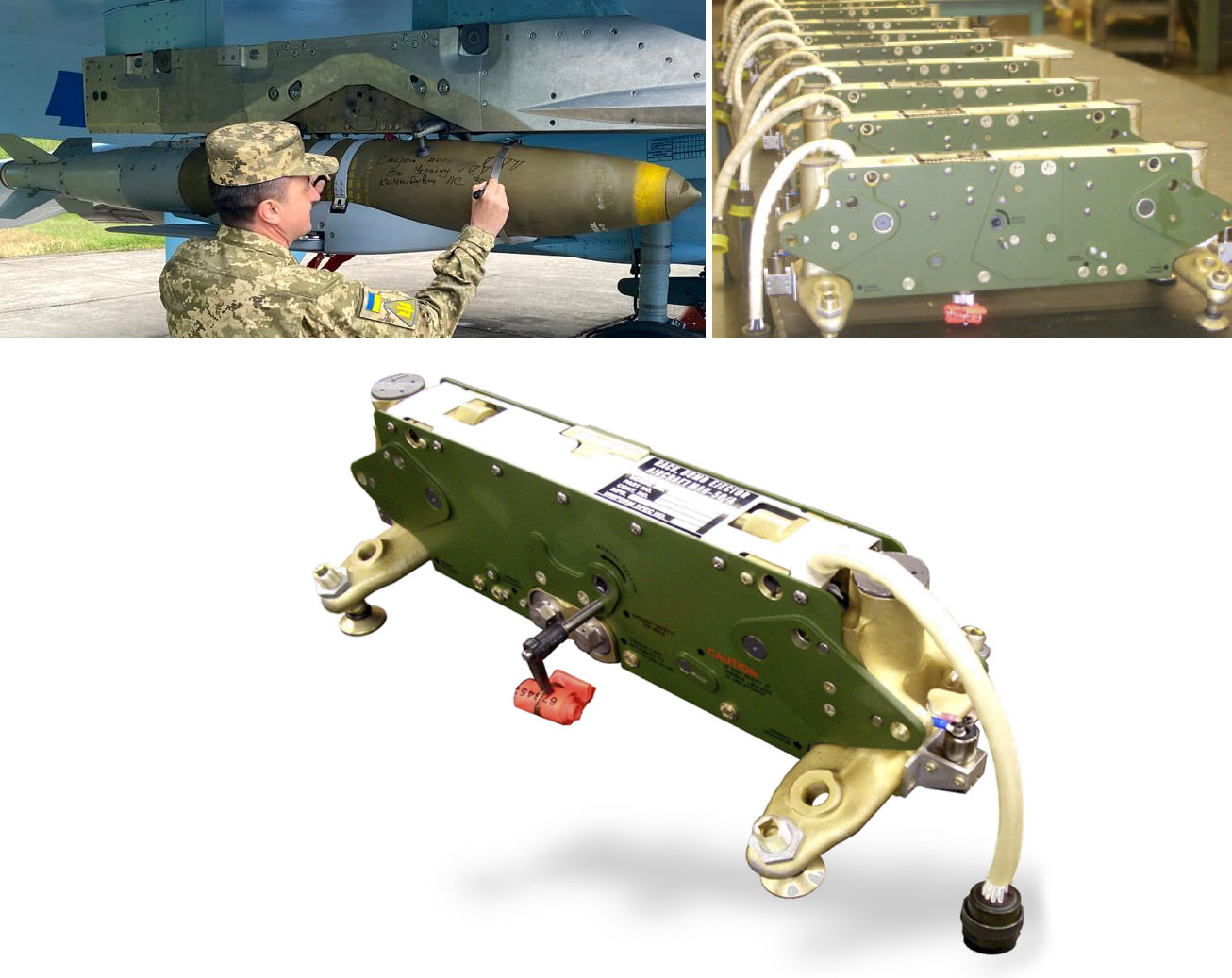
Since Su-27 has a whole ten hardpoints, it might seem Ukrainians would take more decoys but no, only two are seen this time. Possibly because the aircraft is engaged in not only missile strikes but also air threat interception and/or launching JDAM-ER glide bombs.
For instance, in the video, several frames show a standard set for air combat with the R-27 and R-73 air-to-air missiles. As for the JDAM-ER, these bombs were seen in use with Su-27s before, and the special holders are present in this footage, too.

Considering that Ukrainian aircraft can make several sorties a day, the technicians leave the holders in place so they don't have to change them each time. But this is just an assumption.
In addition to the details mentioned, the video also tells about the tactics of using the ADM-160 MALD in Ukraine. The decoys are released simultaneously with or just before the launch of cruise missiles.
The ADM-160 MALD's task is to overload the russian air defense systems and force them to spend expensive interceptors on these decoys, thereby clearing the way for cruise missiles.
The MALD really works, the Ukrainian pilots assure, and earlier there was an illustrative example where the russian Ministry of Defense reported the shooting down of two "cruise missiles" that turned out to be just MALDs.
Read more: Ukrainian MiG-29s Equipped with the Capacity to Use ADM-160 MALD Decoys




